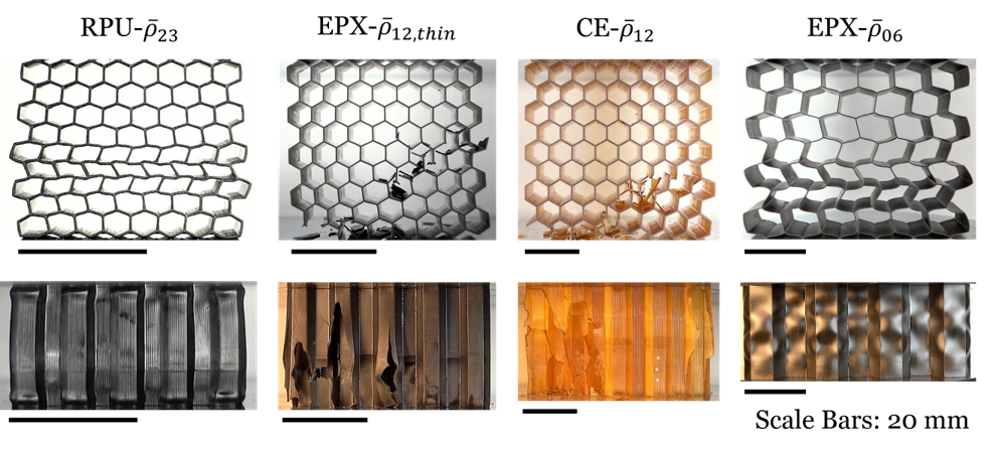Publication in Additive Manufacturing

 Mechanical properties of hexagonal lattice structures fabricated using continuous liquid interface production additive manufacturing
has been accepted to Additive Manufacturing.
Mechanical properties of hexagonal lattice structures fabricated using continuous liquid interface production additive manufacturing
has been accepted to Additive Manufacturing.
Abstract
Additive manufacturing (AM) is a key enabler for architectured lattice materials, because of the geometric complexity of parts that can be produced. Recent advancements in AM have enabled rapid production speeds, high spatial resolution, and a variety of engineering polymers. An open question remains whether production grade AM can accurately and repeatably produce lattice parts. This study presents design, production, and mechanical property testing of hexagonal lattice parts manufactured using continuous liquid interface production (CLIP) based AM. We printed and tested 84 parts, in three polymer materials having relative density ranging from 0.06 to 0.23. Lattice wall structures were reliably printed when truss aspect ratio was in the range 5 to 20 and wall thicknesses were 0.35 or 0.5 mm. The printed lattice parts, each comprising hundreds of slender walls, were measured using high resolution optical scanning. The images were analyzed to evaluate the difference between the printed parts and their designs, and the effect of geometric deviations on the mechanical behavior. The measured elastic moduli of the printed parts are close to the values expected from the materials specifications. The measured strength of the printed parts deviates by 7% from the behavior predicted from the scanned geometry. The failure mode of the printed structures depends upon the material and part geometry. To our knowledge, this is the largest study on the accuracy and performance of AM lattice parts, and the first study of its type for lattice parts made using CLIP.




